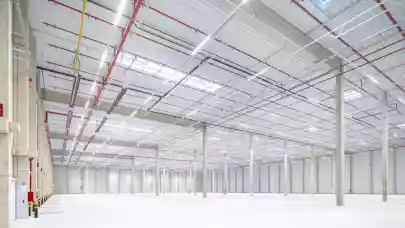
Răzvan Nica, Managing Director, BuildGreen, spoke with Property Forum about the decarbonisation efforts of real estate companies and the growing appeal of green buildings for banks.
What is your outlook for green building certifications demand in Romania?
Green building certifications are expected to keep growing in Romania, becoming a common practice in the office, retail, and industrial sectors, and soon expanding to the residential sector as well. This positive outlook is based on the increasing awareness of sustainability among developers and tenants, the rising environmental challenges, and the economic benefits.
The ongoing transition towards sustainable construction practices is driven by the need for energy efficiency and long-term cost reduction, as well as the improvement of legislation, especially the strengthening of EPC norms and the support of nZEB regulations.
In addition, the growing interest from international investors in ESG-compliant projects highlights the strong case for the sustained growth in green certification demands.
The incorporation of sustainability into core business strategies across various sectors is supporting this demand. As companies aim to lower their carbon footprint and conform to international standards, green certifications such as LEED and BREEAM are becoming reference points for development projects.

Razvan Nica
Managing Director
BuildGreen
What are some of the changes that will shape the future of green building certifications?
The EU's strict rules on energy use and emissions are prompting Romania to adjust its building standards to these requirements, promoting more sustainable building practices.
These regulatory changes make green certifications not just an added value but a necessary criterion for compliance and market competitiveness. Additionally, the range of technical solutions is growing, offering simpler and more efficient ways to achieve sustainability goals.
This shift demonstrates that sustainability does not have to be complicated or expensive; instead, it can be simplified and cost-effective, making it accessible for more projects.
Furthermore, the increasing attention to health and well-being within sustainability measures is changing how buildings are assessed. This comprehensive approach ensures that green certifications include a wider range of environmental impacts, setting new norms for what constitutes a green building.
What are some of BuildGreen’s most challenging projects that have been completed in the past 12 months?
BuildGreen has taken on several challenging projects in the past year, especially those with technical complexities or special client needs. One remarkable example is the Palas Campus in Iași, where the main tenant required exceptionally high standards, compelling the project team to surpass typical sustainability benchmarks. Another important project is the Autonom HQ building in Piatra Neamț.
This project, along with several others we are currently involved in within Western countries, demonstrates the increasing complexity and higher requirements we face. In these regions, the sustainability standards are often stricter, requiring creative and technical solutions.
Our clients have changed their focus from merely obtaining certification to seeking holistic technical solutions and consultancy. They are not satisfied with certification alone; they aim for the decarbonization of their portfolios.
What role does EU regulation play in the development of new green buildings?
The development of new green buildings has been greatly influenced by EU regulations that set high sustainability standards. These regulations are part of a wider strategy to lower the carbon footprint of the building sector, a significant source of Europe’s emissions.
Both main certification schemes, BREEAM and LEED, are currently updating to align with EU norms. Following EU directives, such as the Energy Performance of Buildings Directive (EPBD) and the broader EU Green Deal, has become a key objective for developers.
These regulations not only require minimum energy performance standards but also promote the use of renewable energy sources within building projects. Moreover, they have an impact beyond compliance; they create market demand for green buildings, increase property values, and help build a more sustainable construction sector in Romania. The focus has shifted over time, from simply achieving energy performance to a more holistic approach that includes the decarbonization of both the construction and maintenance processes over the entire lifespan of a building.
This change highlights that true sustainability covers both energy efficiency and the reduction of carbon emissions throughout a building's lifecycle, reinforcing the role of EU regulations in creating a greener future for the construction industry.
How are ESG objectives embedded in the green certification process of buildings?
A building’s impact on Environmental, Social, and Governance (ESG) objectives is comprehensively evaluated during the green certification process. BREEAM and LEED certifications cover a large portion of Environmental and Social aspects, as well as some Governance elements, often complemented by WELL certification.
These factors are crucial as they ensure that buildings are constructed sustainably, ethically, and in accordance with the highest standards, reflecting broader ESG principles. This comprehensive approach not only makes buildings environmentally friendly but also produces positive social outcomes and maintains high standards of governance, ensuring a balanced and sustainable development process.
Are there any challenges in certifying residential projects as green compared to commercial property assets?
Green certifications for residential projects have different challenges than those for commercial properties, mainly due to the differences in size, budget limitations, and the personal preferences of homeowners.
For new developments, marketing them as green can be difficult since many potential homeowners do not know much about the advantages of green certifications and may not see their value. This is similar to the initial problems that the office sector faced, but residential green certification uptake is faster now, partially due to changing legislation.
Residential developers often exit after selling their properties, which can affect their long-term commitment to sustainability. However, in developments that have a long-term vision, such as Greenfield Bucharest, sustainability can enhance the project's attractiveness and long-term success.
Smaller residential projects also face difficulties related to size. However, this can also create opportunities, as some projects go beyond usual sustainability standards like BREEAM or LEED and apply Passive House standards, as demonstrated by notable projects like EFdeN.
On the other hand, commercial properties can use green certifications to enhance their appeal to potential tenants who increasingly demand sustainable building features. The larger scale of commercial projects often makes the investment in innovative technologies and sustainable practices worthwhile due to the possibility of significant operational savings and alignment with corporate sustainability goals.
How are banks approaching the topic of green buildings? What are some of the benefits of green projects in the eyes of financiers?
Green buildings are becoming more valuable for banks and financial institutions as part of their lending and investment practices. This shift is influenced by the lower risk profiles of BREEAM/LEED-certified properties, which often show higher adaptability to environmental risks and regulatory shifts.
Banks also have an incentive to finance green properties because they can attract more customers and potentially earn higher incomes, resulting in more consistent cash flows.
Moreover, as the global consciousness of climate change grows, funding green buildings helps banks align their portfolios with international sustainability standards and regulatory expectations, enhancing their corporate social responsibility profiles.
From a financial standpoint, green buildings often imply lower utility costs, reduced turnover rates, and higher occupancy levels, supporting the financial stability of these investments. Banks can offer better loan conditions for green projects, such as lower interest rates or more favourable loan-to-value ratios, reflecting the lower risk and higher collateral value. Additionally, green buildings usually preserve their value better than conventional buildings, protecting the bank's asset value over time.
The EU Taxonomy regulation, which obliges the financial sector to rank and evaluate their credit portfolios based on clear ESG standards, also has a significant impact. This regulation ensures that banks are not only financing these projects but are also integrating sustainability criteria into their lending policies.
The financial appeal of green projects encourages banks to actively support these initiatives. By investing in green buildings, banks can lower their exposure to environmental risks, benefit from more stable and profitable investments, and participate in global sustainability efforts, aligning their financial strategies with broader environmental and social goals.
What are some of BuildGreen’s development plans for the medium and long term?
We are dedicated to ongoing research to offer our clients the most current solutions, whether technical or procedural, related to certification.
For the long term, BuildGreen’s goal is to shape sustainability practices within the construction and real estate sectors and to innovate with new technologies and collaborative frameworks.
One key initiative is the creation of the Carbon Tool SaaS platform, an innovative BuildGreen project, a comprehensive platform designed to enable businesses to achieve their environmental goals efficiently. It allows users to measure, manage, report, and reduce their carbon footprints with expert support, facilitating smooth and effective sustainability practices.
Additionally, BuildGreen plans to actively engage in policymaking to influence sustainability regulations and standards. We also plan to establish strategic partnerships that utilise technology, such as AI and data analytics, to improve building operations and reduce environmental impacts.



